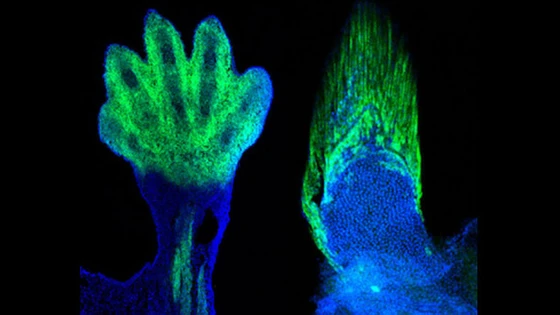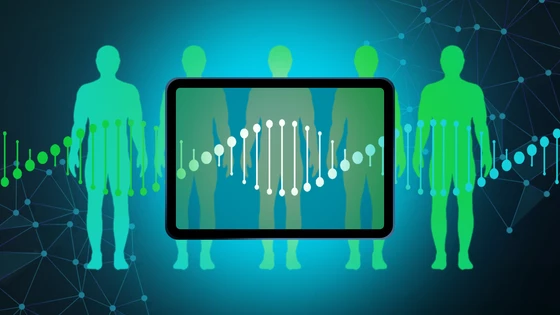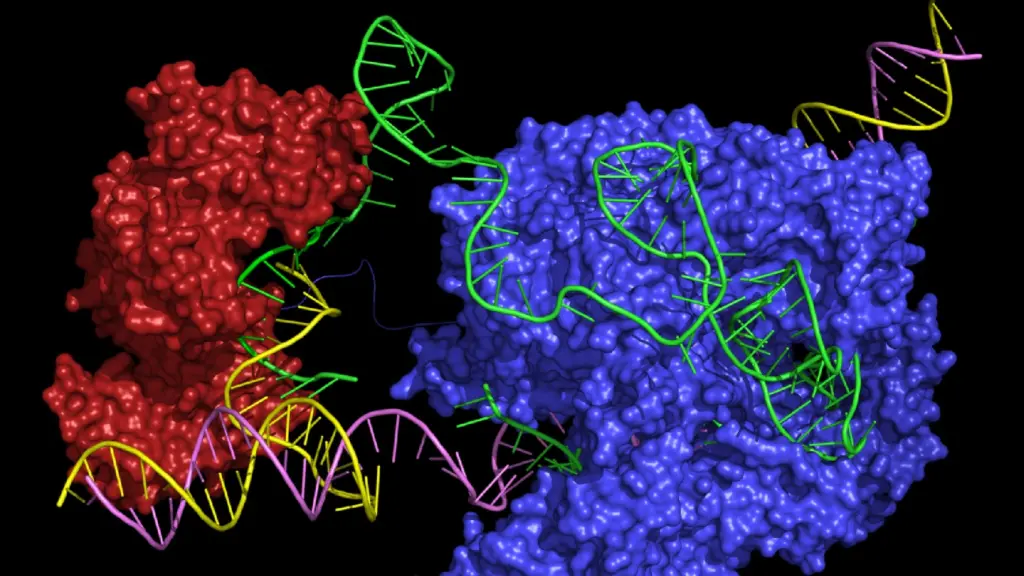Children are taught that through the process of evolution, ancient fish left the water and took their first steps on land, ultimately resulting in the development of arms and legs. Biology has one fundamental problem: understanding how the fins of fish evolved into the limbs of tetrapods, the first four-limbed vertebrates and their descendants. A new study published in Nature out of the lab of Neil Shubin at the University of Chicago, Digits and fin rays share common developmental histories (Nakamura et al., 2016), goes some way to answering that question.
The ground-breaking study involved gene editing using CRISPR and fate mapping – a method of understanding the developmental history of specific cells. The foundation of this work stems from a study conducted by French scientists in 1996, demonstrating that two genes control the development of hands and feet in mice (Fromental-Ramain et al., 1996). When they deleted two specific genes, mice developed without digits or paws; their limbs ended in stumps. These genes were identified as Hoxa-13 and Hoxd-13, part of a family of genes called the homeotic genes or Hox genes.
Hox genes line up in orderly rows to tell other genes when and where to activate so that the body remains in consistent alignment with all the right organs in the right place. Hox genes are expressed in discrete regions along the head-to-tail axis of developing embryos. They specify the construction of specific structures along the axes of developing embryos by controlling the “on-off” switch of many other structure-building genes. In very basic terms, they ensure your head sits atop your neck, and that your legs come before your feet.
Erin Jarvis, a PhD Candidate who uses Synthego’s synthetic RNA for her CRISPR experiments in the lab of Nipam Patel at University of California, Berkeley is an expert in understanding Hox genes and their function during development states that:
"The role of Hox genes is often very modular. Think of it as the kid’s toy ‘Mr. Potato Head’ – rearrange the patterns of Hox expression, and you get all the right limbs in all the wrong places! When one structure is replaced in the likeness of another, it is referred to as a ‘homeotic’ mutation. "
We caught up with Erin Jarvis at length about her evolutionary developmental biology research with the model crustacean Parhyale hawaiensis.
Researchers have known for some time that Hox genes have equivalents in various species: flies, mice and humans for example. This suggests that most animals rely on a common method of body-structuring genes, and therefore share a common ancestry. The arrival of CRISPR technology has provided a much easier way to edit these genes in fish and other organisms. Neil Shubin and his colleagues at the University of Chicago utilized CRISPR to do just that.
Two sets of experiments were run in parallel. In the first, the equivalent genes of Hoxa13 and Hoxd13 were deleted in zebrafish to analyze the effect on fin ray growth; fish without these genes did not develop fins. In the second experiment, Hoxa13 genes were altered to glow under a CT scan as zebrafish developed. Equivalent changes were then made to groups of mice. The aim of this work was to assess the difference between how these specific Hox genes direct limb and fin development between the two species. The results showed a clear link between the development of limbs in mice and fins in zebrafish; in mice, the cells that grow to form the wrist glowed red, and the fish’s fin rays glowed red too. This demonstrates that there is some sort of equivalence between fins and limbs at the genetic level. The difference lies in the types of tissues directed to develop as a result of those genetics; cartilage-based bone in mice and other mammals, and dermal bone in fish.
Speaking to the University of Chicago News, Shubin states that:
Shubin’s lab used CRISPR to more easily modify and delete genes in zebrafish and mice like never before. The findings from their study demonstrates that at a fundamental ancient level, fins and digits are much more similar than we truly appreciate. CRISPR’s impact on this research should not be understated: it has allowed us to see how genes and cells interact to build us, and how we evolve thereafter.
References
Fromental-ramain C, Warot X, Messadecq N, Lemeur M, Dollé P, Chambon P. Hoxa-13 and Hoxd-13 play a crucial role in the patterning of the limb autopod. Development. 1996;122(10):2997-3011.
Nakamura T, Gehrke AR, Lemberg J, Szymaszek J, Shubin NH. Digits and fin rays share common developmental histories. Nature. 2016; Aug 17. doi: 10.1038/nature19322. [Epub ahead of print]







